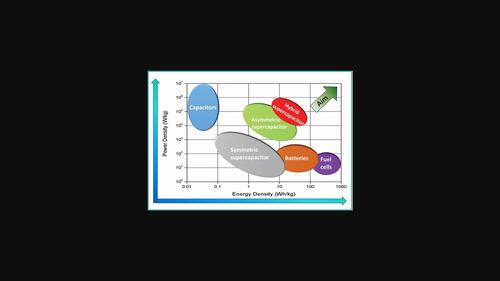电化学储能与转换:综述
IF 5.4
3区 工程技术
Q2 ENERGY & FUELS
引用次数: 4
摘要
电化学能量存储和转换装置是非常独特和重要的,为清洁,智能和绿色能源领域提供解决方案,特别是在固定和汽车应用中。它们被广泛地分类和概述,特别强调可充电电池(锂离子电池、锂氧电池、锂硫电池、钠离子电池和氧化还原液流电池)、电催化剂和燃料电池的膜电解质。可持续储能系统发展面临的主要挑战是能量密度有限、速率能力差、成本、安全性和耐用性。尽管在应对这些挑战方面已经取得了巨大的进步,但要满足能源需求还有很长的路要走,尤其是在大规模储能和电动汽车方面。包括下一代电池技术在内的电池材料发展的景观被精心地到达,这使得探索替代能源存储技术成为可能。下一代储能系统,如锂氧、锂硫和钠离子化学物质,可以成为超越最先进的锂离子电池的潜在选择。此外,氧化还原液流电池通常被认为是大规模存储电力的可能替代方案,它具有将功率和能量解耦的独特优点。在本综述中,对材料挑战进行了系统的调查,并对存储和转换设备的结构-性能-性能关系进行了全面的了解。此外,还详细介绍了各种催化剂和膜电解质,这些催化剂和膜电解质可以作为聚合物电解质燃料电池的可行替代品,并强调了未来研究领域的方向。本文章由计算机程序翻译,如有差异,请以英文原文为准。

Electrochemical energy storage and conversion: An overview
Electrochemical energy storage and conversion devices are very unique and important for providing solutions to clean, smart, and green energy sectors particularly for stationary and automobile applications. They are broadly classified and overviewed with a special emphasis on rechargeable batteries (Li‐ion, Li‐oxygen, Li‐sulfur, Na‐ion, and redox flow batteries), electrocatalysts, and membrane electrolytes for fuel cells. The critical challenges for the development of sustainable energy storage systems are the intrinsically limited energy density, poor rate capability, cost, safety, and durability. Albeit huge advancements have been made to address these challenges, it is still long way to reach the energy demand, especially in the large‐scale storage and e‐mobility. A landscape of battery materials developments including the next generation battery technology is meticulously arrived, which enables to explore the alternate energy storage technology. Next generation energy storage systems such as Li‐oxygen, Li‐sulfur, and Na‐ion chemistries can be the potential option for outperforming the state‐of‐art Li‐ion batteries. Also, redox flow batteries, which are generally recognized as a possible alternative for large‐scale storage electricity, have the unique virtue of decoupling power and energy. In this overview, a systematic survey on the materials challenges and a comprehensive understanding of the structure–property–performance relationship of the storage and conversion devices is covered. Further, in‐depth detailing of various catalysts and membrane electrolytes that can be explored as a viable alternative for polymer electrolyte fuel cells as well as direction toward futuristic research areas is highlighted.
求助全文
通过发布文献求助,成功后即可免费获取论文全文。
去求助
来源期刊

Wiley Interdisciplinary Reviews-Energy and Environment
ENERGY & FUELS-
CiteScore
11.70
自引率
3.30%
发文量
42
期刊介绍:
Wiley Interdisciplinary Reviews: Energy and Environmentis a new type of review journal covering all aspects of energy technology, security and environmental impact.
Energy is one of the most critical resources for the welfare and prosperity of society. It also causes adverse environmental and societal effects, notably climate change which is the severest global problem in the modern age. Finding satisfactory solutions to the challenges ahead will need a linking of energy technology innovations, security, energy poverty, and environmental and climate impacts. The broad scope of energy issues demands collaboration between different disciplines of science and technology, and strong interaction between engineering, physical and life scientists, economists, sociologists and policy-makers.
 求助内容:
求助内容: 应助结果提醒方式:
应助结果提醒方式:


